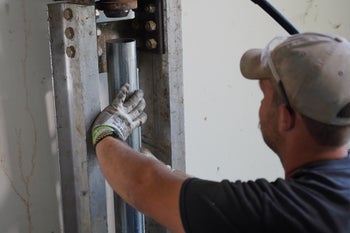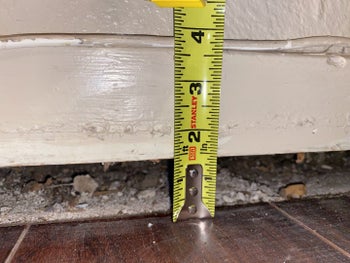A Complete Guide to Helical Piers
Table of Contents
1. What Are Helical Piers?
2. How Do Helical Piers Work?
3. When Are Helical Piers Used?
4. Benefits Of Helical Piers
5. What’s The Difference Between Push Piers And Helical Piers?
6. Which Type Of Pier Is Right To Repair My House?
7. Common Signs Of Foundation Damage
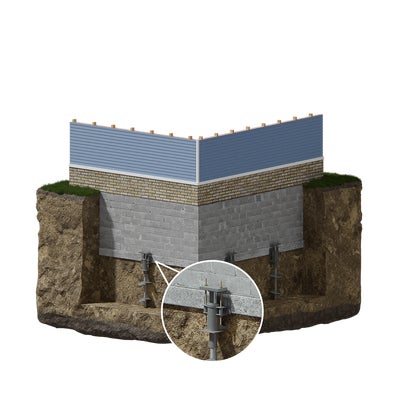
Foundation damage varies from home to home, and each requires its own personalized repair solution.
Helical piers are one of the many tools offered by foundation repair specialists like Bay Area Underpinning. These piers are used to strengthen and stabilize residential and commercial foundations experiencing settlement.
In this article, we will talk about what helical piers are, how they work, when they’re used, and more.
What Are Helical Piers?
Helical piers – also referred to as helical piles, screw piles, screw piers, screw anchors, helical anchors, and helical screw piles – are foundation piers that look something like giant corkscrews. They’re used to strengthen and stabilize residential and commercial structures with problems due to differential settlement. The piers transfer the structure’s load to soil that can support it.
Helical piers are mainly used for new construction projects requiring a deep foundation system because the soil is less than ideal. However, helical piers are also used to stabilize existing foundations.
There are two types of helical piers: round shaft, and square shaft. The one used depends on the situation.
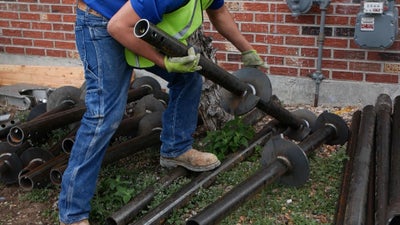
How Do Helical Piers Work?
Helical piers are turned into the soil until they reach the necessary depth or torque requirement. (A geotechnical engineer determines this.) The depth is usually somewhere between 10 and 30 feet. However, they can be installed up to 150 feet deep if required.
Helical piers come in various configurations and sizes. Geotechnical engineers determine which type to use based on a soil report. This is because the diameter of the helix depends on the type of soil. For example, larger helices will be necessary if the soil is rich in clay. Also, a helical pier might need more than one helix in certain situations.

When Are Helical Piers Used?
Helical piers are used when a new construction project requires a deep foundation system because of problematic soils and when an existing structure needs stabilization because of differential settlement. We’ll talk more about differential settlement in just a bit.
Helical piers are suitable for use in either seismically active, environmentally sensitive areas, or with a high groundwater level. The stability of helical piers can be increased by using multiple bearing plates.
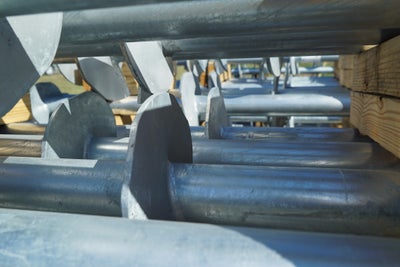
What Is Differential Settlement?
All structures will settle into the soil slightly after they’re built. This is normal, and as long as the settlement is uniform, it’s nothing to worry about. The problem is when a building settles unevenly into the soil. This is called differential settlement.
Differential settlement is caused by various things, including:
- Poor compaction – Soil needs to be correctly tamped down before anything gets built on top of it. If this isn’t done during construction prep, the structure could settle unevenly into the soil after it’s built.
- Expansive soil – This is clay-rich soil that expands when it absorbs moisture and then shrinks when it dries out. This back-and-forth swelling and shrinking creates movement in the ground under the foundation and can lead to differential settlement.
- Soil erosion – Erosion-prone soil could lead to the formation of voids under the foundation. When the structure settles into the voids, you have differential settlement.
- Excavation next door – Heavy excavation can destabilize the soil under nearby structures leading to differential settlement.
- Earthquakes – We probably don’t need to explain how seismic activity can lead to structural problems.
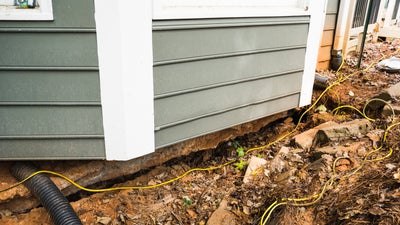
Benefits Of Helical Piers
The benefits of helical piers include the following:
- They don’t require heavy excavation
- Minimal disturbance to the soil
- Quick, year-round installation
- No curing time like there is with drilled concrete piers
- Suitable for projects requiring a deep foundation system (seismically active, high groundwater level, etc.)
What’s The Difference Between Push Piers And Helical Piers?
Both helical piers and push piers are used to stabilize failing foundations and correct differential settlement. Helical piers are usually the choice for lightweight structures such as single-story residential homes. For more information, see What Are Push Piers And How Do They Work?
Which Type Of Pier Is Right To Repair My House?
We can’t say which type of pier is suitable for repairing your house without an inspection. However, as noted above, helical piers are usually used with lighter-weight structures such as one-story residential homes. Push piers are more commonly used for heavier structures since the piers are driven into the ground using the structure’s weight.
Common Signs Of Foundation Damage
Learning to spot the signs of foundation damage early is the key to saving money on repairs. Common signs of foundation damage include:
- Uneven floors – The unevenness might be so slight you don’t even notice it at first.
- Stair step cracks in brick or masonry – This is a sure sign of differential settlement and foundation damage
- Windows and doors that no longer open and close properly – If the problem is limited to one window or door, it might not be a foundation problem. However, problems with multiple windows and doors indicate a foundation issue.
- Cracks in walls, ceilings, and floors
- Bowed walls, with or without cracking
- Ceilings and floors that have separated from the wall – Even slight separations can indicate a problem.
- Drywall cracks or nail pops
- Torn wallpaper – This might indicate the wall behind the wallpaper is cracked.
- Moldings that are separating from the wall or ceiling
- Chimneys and porches that lean away from the house
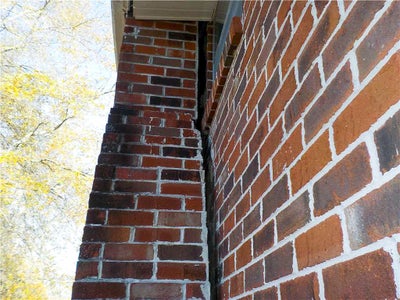
If you notice any of these problems and think your Northern California property might need foundation repair with helical piers, contact us today for a free foundation inspection and repair estimate.
More Resources
Publish Date:
Last Modified Date:

Our Locations
2333 Courage Dr. Suite C
Fairfield, CA 94533
1161 N Fair Oaks Ave
Sunnyvale, CA 94089

